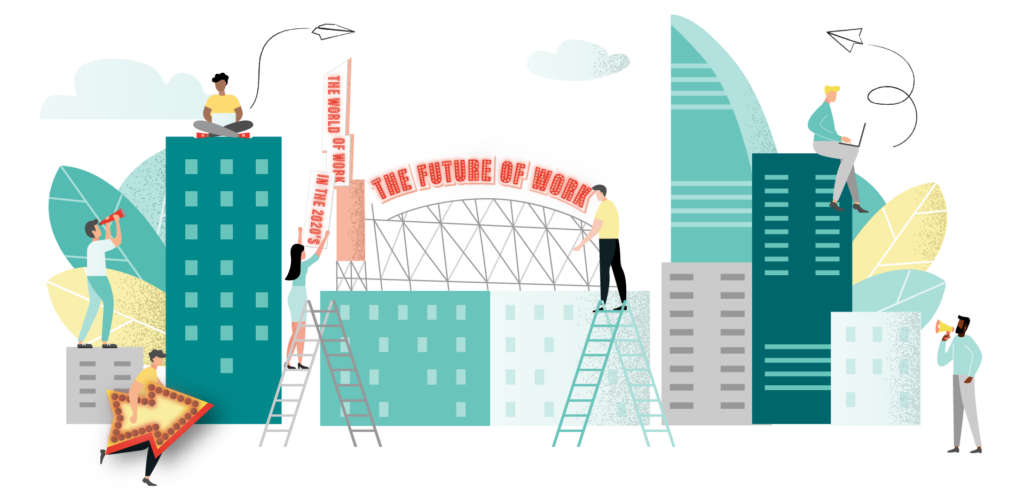The world of work in the 2020’s
A point of view on the future of work, workplace culture and leadership in the 2020s.
As the clock struck midnight on New Year’s Eve, we entered a new decade. “The roaring 20s are back,” several social media posts gleefully announced. Of course, many people have a romanticised view of the 1920s – it was a time of huge economic, social and political change.
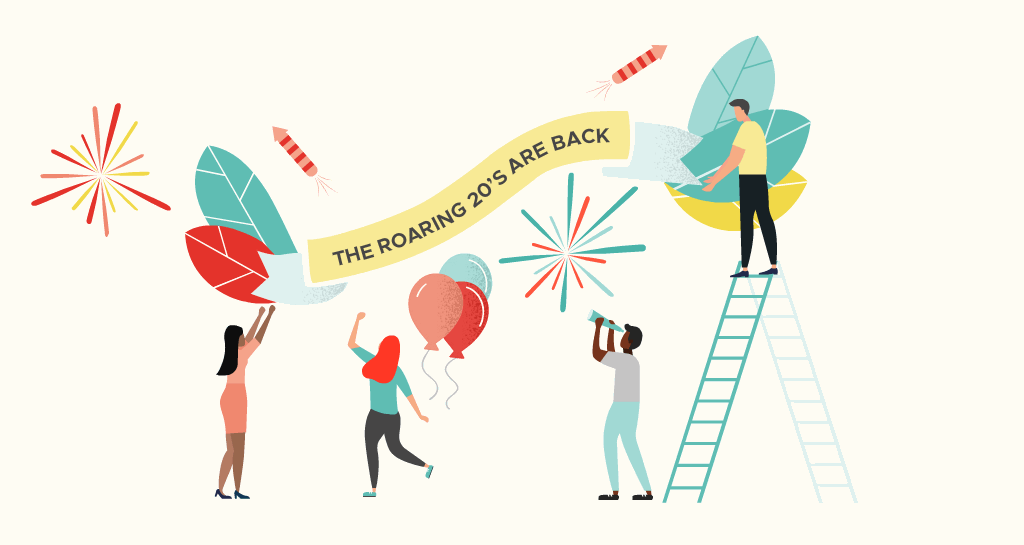
The end of the First World War meant the end of rationing, the growth of consumerism and the mass production of the automobile. Women burst into society – they were given the right to vote, for the first time were pictured with short hair and the iconic flapper dress; they were even behaving in what at the time were considered very ‘unladylike ways’… dancing the Charleston, drinking whiskey and smoking (gasp!). At the same time, Louis Armstrong was improvising, giving rise to jazz, and the lovable Mickey Mouse hit our screens. When you look at it that way, it’s easy to see why people might be excited about the prospect of the 2020s bringing the same levels of growth, prosperity and unbridled excitement.
In our version of the 20s, we are once again in a time of significant economic, social and political change. eCommerce has changed the way we do business and altered the global retail and logistics landscape, and this is only set to continue. The exponential growth of technology is not expected to slow down in the 20s. People are giving voice to social issues such as diversity, inclusion, gender, equality and LGBTQ rights, and they are not afraid to stand up to their governments, the establishments and their employers – in the search for truth and fairness. And for those who don’t have a share in the oil and gas industry, the 20s are the crucial decade for us to avert the climate emergency.
Let’s hope we look back on the 2020s with the same romanticism and that the decisions we make in the next 10 years put us on the right side of history.
For those of us who are leaders in organisations we have to ask ourselves:
“What do we need to be thinking about NOW to make the 2020s a roaring success for our business and our people?”
Here are the big considerations for the world of work in the 2020s:
- The amount of political and economic uncertainty creates nervousness in employees, investors and leaders – the plan one day, may not be the plan the day after, being change resilient and change ready will be key
- The growth of technology changes the way we engage and communicate with our people and customers, and therefore change the skills and talent we need
- The baby boomer generation will be retiring, the exit of this loyal, long-term goal oriented and disciplined group will change the dynamic of the workplace
- Millennials will dominate the workplace, and are tomorrow’s leaders, they are purpose led, values driven, altruistic and tech savvy
- Generation Z will be entering the workplace – a generation of digital natives, raised with technology and social media, stereotyped as ‘social justice warriors’, searching for ‘truth’ and doing the right thing for the greater good
- Organisations that don’t act responsibly and do ‘the right thing’ will not win the hearts and minds of customers and employees
- In the 2020s people will not be afraid to ‘jump ship’ if their organisation does not give them what they need from a job, this no longer means career progression and a healthy retirement plan, but connections to their personal ethics and values alongside work/life balance, purpose, fulfilment and enjoyment
- Unlike the 1920s where manual handling injuries were high due to the high levels of manufacturing and physical labour roles, today and more so in the 2020s stress and mental health will be the topic of concern
With that in mind, as you set about drafting your 2020 people strategy consider these six things as we demystify how to create a great workplace culture in the roaring 2020s.
Culture First
In the 1920s, people were revelling in the post-war prosperity and were happy to just have a job. Often these cultures were ‘command and control’ and people lacked autonomy. But, they stuck it out.
In the 2020s… a ‘great place to work’ culture is not just a nice-to-have; people want a culture that connects with their personal values or they’ll go somewhere else!
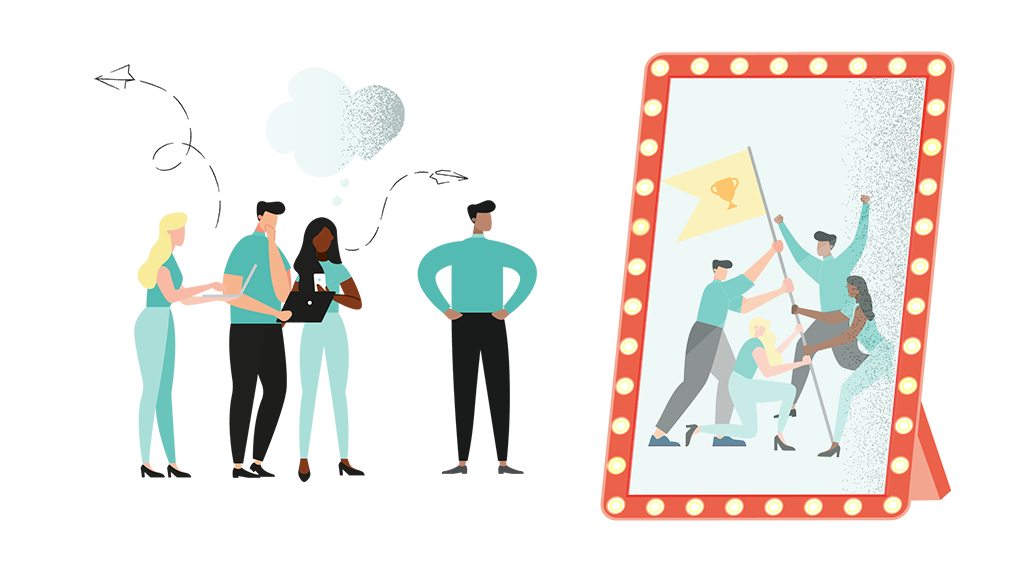
In a recent Glassdoor survey, 77% of respondents said they would consider the company’s culture as part of their decision making and a recent Mercer article said that 2020 would mark the ‘culture first’ decade in the world of careers. People want to know that the organisational culture matches their own values, and this rings true for your customers also. But getting a truly aligned culture at all levels of the organisation takes time and effort, so if you haven’t already, get started…
… with a story:
- Are you clear about your narrative? Why does the organisation exist? What impact does it have on the world? What does it do? How does it do it? Who does it do it for? Be able to tell that story in 30 seconds and make it exciting
- Define the type of people that help to deliver that impact
- Tell that story far and wide at every level of the organisation, consistently, every day, until everyone can repeat it and feels proud of it – even the intern should be able to reel it off
Engagement is non-negotiable
In the 1920s, people stuck it out, by hook or by crook. People were grateful to have paid employment and the security that came with it, and expectations around being engaged at work were pretty low. But 100 years later the world is quite different; organisations can’t ignore employee engagement.
In the 2020s, companies that focus on engaging their employees and growing them will win the war on talent.
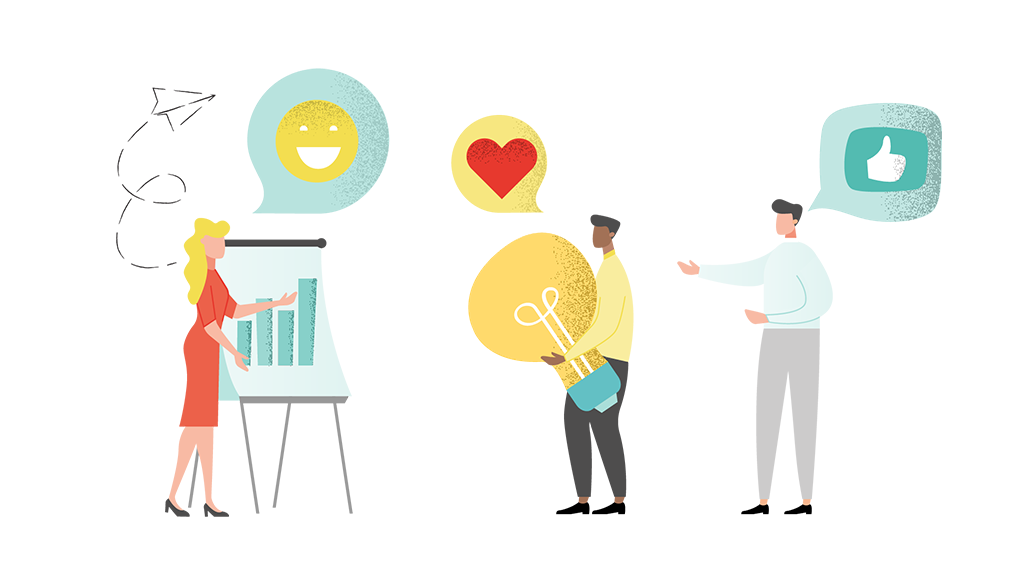
In a 2019 Gallup survey only 15% of employees said they felt engaged at work and that they were reaching their full potential. The rest stated they would pursue other opportunities if they came along. Today people have more choice than ever before, and as mentioned, new generations entering the workplace are not afraid to ‘jump ship’ if they are not engaged at work.
This year, when you’re thinking about your engagement strategy, focus less on the survey and the PM system. Put all of your effort into enhancing the quality of human, two-way conversations with your people. Generations entering the workforce in the 20s want to know that their opinion is important and that their contribution every day counts (not just every six months at review time). In organisations that have focused on a ‘human-centred’ approach to engagement where managers spend just 15 minutes a week checking in with their people, they have seen a 9% increase in employee engagement in six months.
Keep engagement simple…
- Focus on simple, targeted communication – don’t tell everyone everything if it doesn’t apply to them; make it personal and use the right channels
- Help your managers have better conversations – human, in-the-moment, two-way conversations. Remind people about the importance of a ‘thank you’
- Be honest, adult, and do what you say you’re going to do. Generations in the 20s value openness and honesty rather than a team away day (remember Gen Z are social warriors and will seek out the truth)
Work-Life balance
In the 1920s, despite the growth in consumerism and ‘free time’, people very much lived to work. There was little consideration for how the work–life balance impacted people’s health and wellbeing.
In the 2020s, companies need to look beyond the traditional working practices and focus on creating real ‘work-life’ balance for employees.
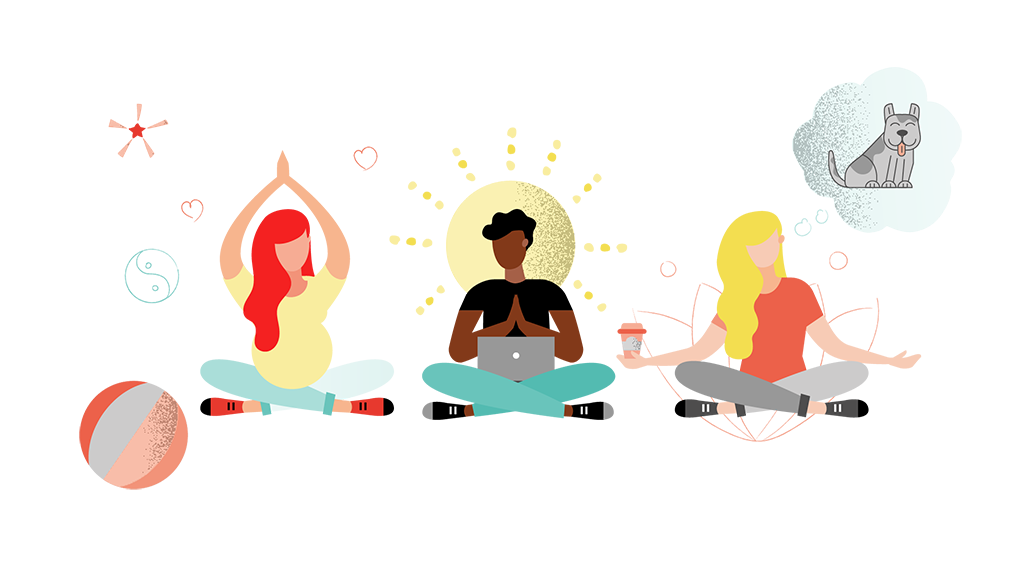
Why? Not only because it’s the ‘right thing to do’ but in our hyperconnected, technological world and with the pace of change happening faster than ever before, poor mental health and stress leads to over 70 million lost working days a year, and a recent study found that 60% of workers experience performance drops as a result of chronic stress and burnout in the workplace.
It starts with showing we care…
- Help your managers understand the importance of knowing their people, showing they notice when the workload gets a little heavy and being empathetic to that, adjusting where necessary (oh, and a ‘thank you’ goes a long way)
- Focus on the importance of welfare and wellbeing conversations, before things escalate
- Workshop or ‘hack’ with your teams on what they think gets in the way of their work–life balance because they often have the answer and will own the solution. You’ll be surprised that it’s not as drastic as going to a three-day week
Leaders as facilitators
In the 1920s, leaders were typically very command and control. They set the direction and dictated how to get there, with little input from the team.
In the 2020s leaders will need to be facilitators and ‘change motivators’.
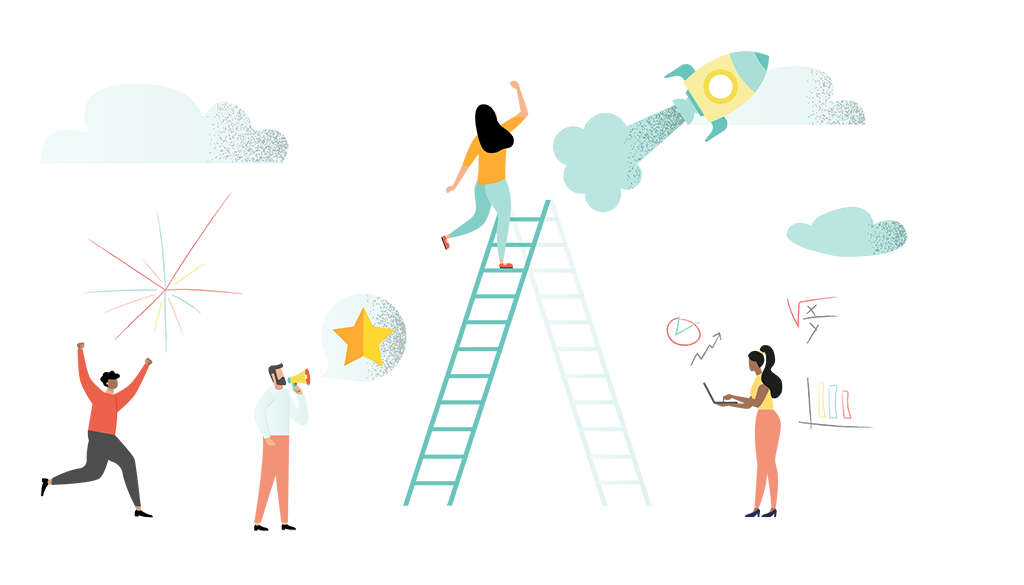
In the 2020s, the generations in and entering the workplace want to understand the ‘why’ and have a strong desire to know that their opinion counts and makes a difference. This requires a very different type of leadership, a more sophisticated type of leadership. Never before has Dan Pink’s work around autonomy, mastery and purpose been so relevant. They need to be given the space to master their role and gain competence at the same time. They need to have the autonomy and space to ‘give it a go’ and ‘get it wrong’. Leaders as facilitators is the route to achieving this.
Second to that, leaders need to be the reassuring ‘change motivators’, the pace of change will be fast and what’s happening one day may be different to what’s happening the next. To do this, leaders in the 20s first of all need to be change resilient themselves. They need to be ok with not having all of the answers and present themselves to the team as inspiring problem solvers and ‘change motivators’.
In the 20s develop your leaders to…
- Be ok with not having all of the answers and manage the destruction caused by ego – now more than ever, give your leaders the tools to be personally resilient by increasing their self-awareness and emotional intelligence
- Team alignment has never been more important – focus on getting teams aligned so that in times of change and flux people are still clear about the end goal
- Build your leaders’ capability in team facilitation and coaching – help your leaders create a two-way conversation with their teams to reach the end goal together
Do the right thing
In the 1920s, we saw women gain the vote, wear short hair and don the flapper dress. In reality, the freedoms of women were still in their infancy and few women dared to wear a dress above the knee in public – it was seen only in advertisements.
In the 2020s, the spotlight will be on organisations who ‘do the right thing’.
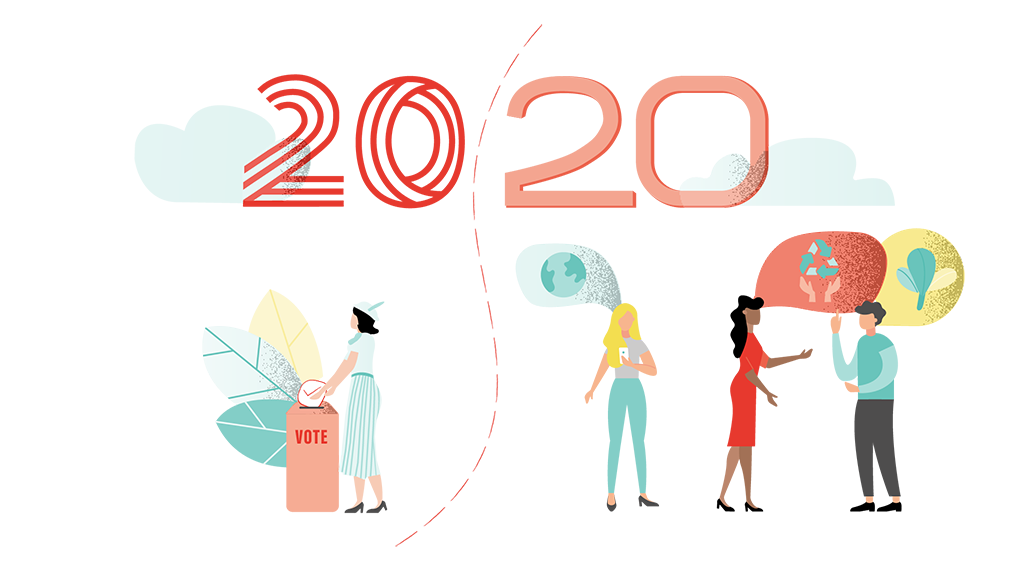
While progress has been made, gender inequality is still rife across the globe. There is still a significant gender pay gap, as well as prejudice and exclusion of ethnic groups and the LGBTQ+ community, to name a few… In short, the world of work has a lot of work to do in the space of diversity and inclusion.
This conversation will only escalate in the 20s. Employees’ voices will only get louder as more pressure (and rightly so) is put on organisations to put diversity and inclusion as a priority on their agenda.
Secondly…
As Henry Ford increased production of the automobile in the 1920s on his famed production line, for all his brilliance he was naive to the impact this industry would have on the environment. It’s not the only culprit, but it was a handy segue into the topic of the climate crisis. Scientists say that we have around 10 years to make significant changes to the impact that humans are having on the planet. This topic will be paramount for your world of work in the 20s. Talent will be attracted to and stay with organisations that have a rigorous green agenda and don’t just play lip service to it.
It’s not about one person doing everything perfectly, it’s about everyone doing something imperfectly…
- Help everyone from your senior managers down to team members understand the importance of diversity and inclusion, but more importantly do not be afraid of making it part of the everyday conversation. Talk about it head on, have the conversation, ask the question. Sometimes we might get it wrong, but it’s about learning from it and getting it right next time. In short, help people talk about, understand, accept and celebrate ‘difference’.
- Ensure everyone in the organisation understands how they contribute to the green agenda and make it part of the everyday conversation – people need to live and breathe it for it to be authentic and to make a difference.
- Give feedback – when you see things happen that are great shout about it! And don’t be afraid to give people a nudge in the right direction, and if they’re getting it wrong train them.
Harmony between people and tech
At the start of the 1920s, people were curious about the growth of industry and manufacturing. In time they learned that the automobile helped us to get places faster and that the pop-up toaster helped make breakfast time much easier!
In the 2020s, organisations who focus on creating harmony between humans and tech will come out on top.
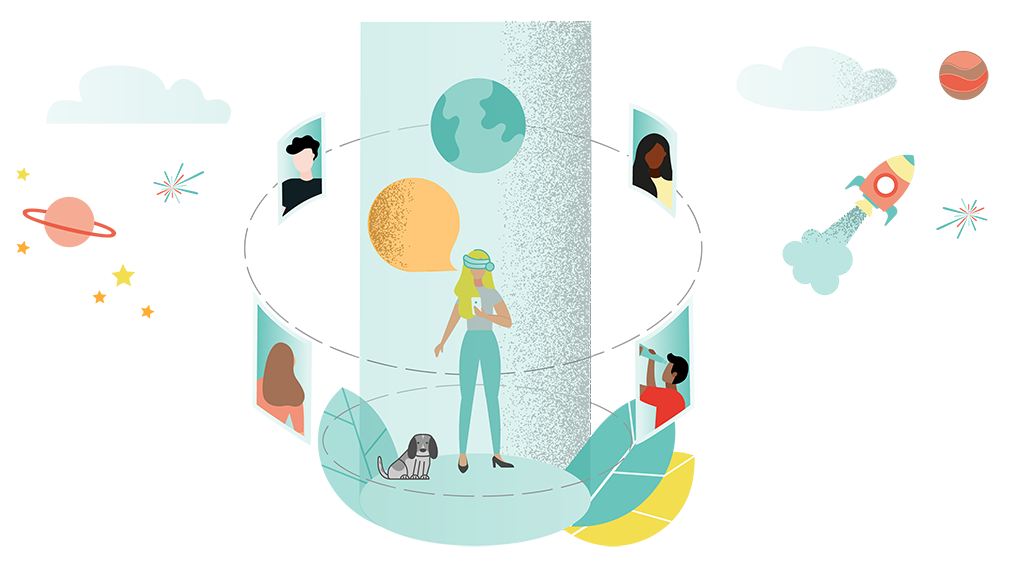
People often talk about the growth of technology replacing humans. But in actual fact we can use technology to enhance human performance, giving us more time and energy to do the things that only humans can do.
Organisations that are using technology to enhance human performance and create more seamless experiences for their employees and customers will ultimately create the most value for their business as well as create employee and customers experiences that they will love.
Today we see that organisations are investing in the hardware but either aren’t clear or don’t tell the right story about the co-existence of technology and humans in their organisation. The result: employees worry about being replaced or customers feel like the technology is replacing their human interaction with the brand.
The answer is augmented humanity…
- Augmented humanity is the idea that technology enhances human performance – if you are using technology more in your organisation to replace human administration, create a clear narrative about how the technology and humans work together and share this reassuring narrative with your people including the benefits to your team, customer and business.
- Training – you’re training people about the system, but more importantly, you need to train people how to have conversations again; the system is doing the work, so you need to train humans to be humans again (i.e. to ask customers how their day is going, about their family, about the trip they’re about to take).
- Workforces in the 20s learn and communicate through social media, WhatsApp and gamification, 71% of millennials say they ignore most of their emails. Make sure you’re adapting the way you communicate, develop and engage with your people in bringing the best of human and digital together.
Today…
While there is still work to be done, some organisations and business leaders today can proudly say they are achieving things that some world leaders can’t. Bringing cultures, genders, nationalities, age groups, sexual orientations and technology all together under one roof and working together in harmony to achieve amazing things. While we may not be able to control some of the things that are happening in the world, as a leader in an organisation with influence and responsibility to large groups of people, do you want to look back and say that in the ‘roaring 2020s’ your impact made the world of work a little better for your people?
If so, think about how mature you are in some of these areas and never hesitate to give us a call at NKD if you’d like to discuss it further.
